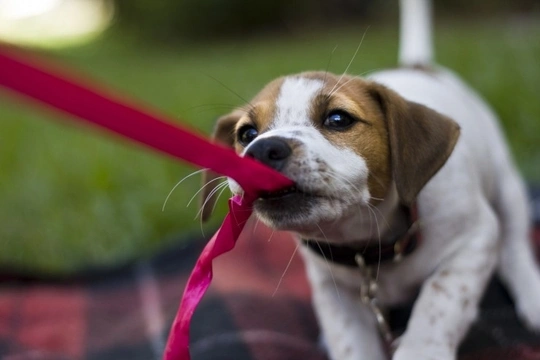
Teaching your dog to play nicely with tug toys
Tug toys for dogs come in a wide range of shapes and forms, from soft rope with a secure knot at each end to balls or batons with a rope on them to double-ended toys that are designed to be played with by two dogs, or a dog and a person, simultaneously.
These type of toys are very popular, as evinced by the sheer number and different types of them on the market, but they must be used properly in order to prevent causing problems in terms of your dog’s behaviour and actions, both when playing with the toy and at other times too.
Some dog trainers and canine behaviourists actually advise dog owners to steer clear of toys like these altogether, and for some dogs, this may well be the best form of action-but for many other dogs, there is no reason why they cannot be allowed to play with tug toys if this is what they enjoy, providing that you teach them the proper rules and etiquette of such play both with people and other dogs, and they prove themselves willing to obey the rules.
In this article, we will look at how to teach your dog to play nicely with tug toys, why such play might not be appropriate for all dogs, and how to tell if your dog is one of them. Read on to learn more.
Why are tug toys not appropriate for some dogs?
Tug toys are not a good match for all dogs, and in some dogs, they can potentially lead to behavioural problems or give your dog the upper hand if they tend to be dominant or pushy, and as such, playing with tug toys with them and essentially getting into a power play that your dog stands a good chance of winning may not be appropriate.
If your dog has trouble keeping within the boundaries that you set for them, tends to be possessive over their toys or will take things too seriously, tug toys may not be a good choice. Additionally, if your dog has a tendency to be dominant or is getting a bit too big for their boots, using a tug toy with them may blur the firm boundaries that you are trying to set for them, and make keeping them in check harder.
The basic rules to follow
When playing with tug toys with your dog, it is important to follow a few basic rules to keep your dog in check and prevent possible accidents, or play behaviour becoming too unruly or out of control.
- Keep the tug toy, and the play, at waist height or lower, and do not encourage nor allow your dog to lunge for the toy or jump up to try to get it.
- Don’t allow snatching for the toy, nor let your dog bite their way up the length of the toy too close to your hand.
- Make sure that your dog will follow commands reliably, such as to drop it if told, and practice this skill regularly so that your dog responds instinctively.
- Don’t allow your dog to become possessive over the toy, or see it as a resource to guard and keep other people or dogs away from. If this occurs, correct your dog’s behaviour, and take the toy away.
- When your dog does drop the toy, don’t snatch or grab at it, as this may trigger an instinctive urge in your dog to try to snatch it up before you, and they will almost certainly be faster than you and may nip your fingers as well as the toy!
Why tug play can be useful for some dogs
Whilst playing with tug toys is something that should be managed carefully to ensure that your dog does not become a problem, tug toy play can actually help to teach your dog a few skills and assist with their training and general management too.
If your dog really likes playing tug, this can be used as a high-value reward as part of training, to allow your dog to play with something that they really enjoy when they have done well at something.
Additionally, if your dog is rather noisy, giving them their tug toy and a few minutes to chew on it can help to divert them from undesirable behaviours such as barking, and when you remove the toy later on, they will likely have forgotten all about what they were barking about in the first place!
It can also be used to help to teach your dog impulse control, bite inhibition, and to pay attention to your cues and respond reliably, even when they are excited about something, and which will rub off in other areas too when it might be really necessary, such as if your dog runs off or tends to develop selective deafness when they are having fun.
Learning that failing to respond to commands means that the game ends and the toy is removed can be a powerful motivator for dogs that get a little carried away at times!



